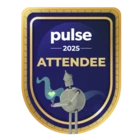Before I post the question on which I would want CS enthusiasts to brainstorm on, I would like to thank all the folks who joined the Crank Up Webinar last week. I truly value your participation there! 😊
Now, let’s brainstorm 😇 on the question that I asked during the session;

Let me kick start the discussion. Below are some of the points that I would consider;
- Tracking feature adoption pre and post campaign - Pull usage data and track the percentage change in adoption
- Leveraging surveys for campaign - Rather than sending just a JO email to the customers, attach a survey question to it. This will help in understanding if campaign emails are being read by the customers or not
- Best Practices requests - If there’s an increase in number of best practices requests from customers regarding the feature we started the campaign on, this is again a success
I could be right or wrong about the points I shared but I am open for thoughts.
During the session a few of the participants did answer this live,
It would be great if you’ll can elaborate on these here in this forum :))
Let’s begin the discussion. Please share share your learnings/thoughts on the comments below 👇🏻



